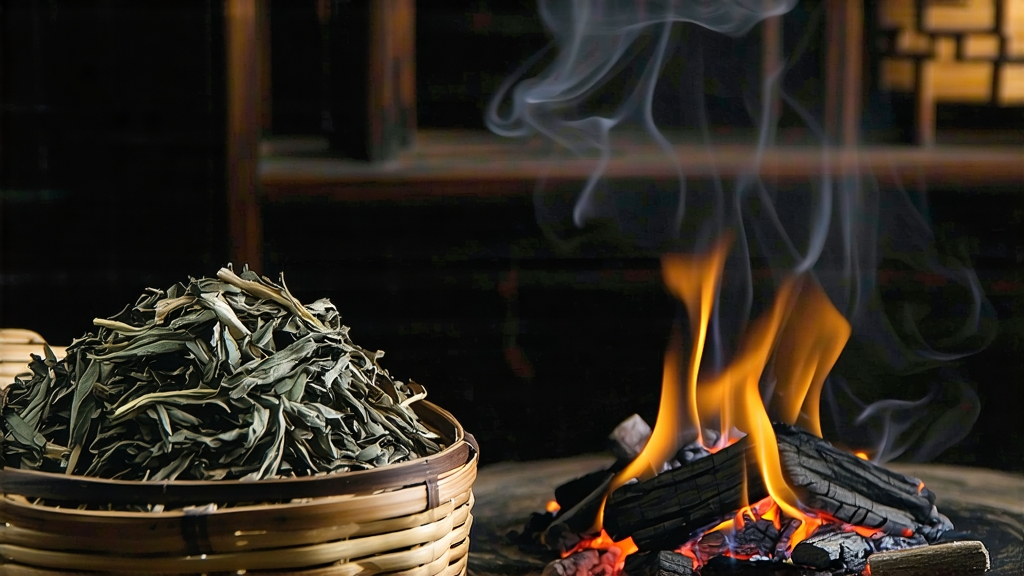
Long before English breakfast blends and afternoon scones, a small village in the Wuyi Mountains of northern Fujian produced a tea so radically aromatic that it sailed around the Cape of Good Hope and rewrote European palates. Locals call it Zheng Shan Xiao Zhong; the West knows it as Lapsang Souchong. Today the name evokes campfire nostalgia, yet its story is one of military urgency, imperial taxation, and accidental innovation. This article invites the international drinker to look beyond the smoke and discover why the original leaf from Tongmu Guan remains the benchmark against which all black teas are measured.
-
A history written in gunpowder and pine
The year 1646 was turbulent for Fujian. Qing troops pressed south; Ming loyalists retreated into the Wuyi range. A detachment of soldiers commandeered a tea factory in Xingcun village, forcing farmers to abandon the last stage of green-tea production. When the troops finally moved on, the leaves had oxidized overnight. To mask the bruised aroma and accelerate drying before the next raid, workers rushed the leaf over open pinewood fires. The result—dark, wine-red liquor laced with resinous sweetness—was an instant hit with Dutch traders already anchored at Xiamen. By 1669 the East India Company listed “Bohea Souchong” at 28 guilders per pound, more than double the price of green Singlo. Thus the world’s first fully oxidized tea entered global commerce, and the word “black” tea was born in European ledgers. -
Terroir: why Tongmu Guan cannot be cloned
The core appellation, officially protected since 2002, covers only 50 km² of steep granite gorges where the Chong’an River funnels cool mist through stands of Masson pine and bamboo. Day-night temperature swings of 15 °C slow photosynthesis, concentrating amino acids; the granite soil, rich in potassium and manganese, delivers a natural umami undercurrent impossible to replicate in lowland gardens. Within this micro-zone only six hamlets—Mashu, Guadun, Miaowan, Tongmu, Bailin, and Gaosu—may sell authentic Zheng Shan. Any leaf picked outside the pass, even if smoked identically, is classified as “wai shan” and legally barred from the coveted designation. -
Cultivars: the quiet diversity behind one name
Although international vendors treat Lapsang as a monolith, connoisseurs distinguish three primary cultivars.
• Cai Cha (mixed bushes) – the historical backbone, giving peppery brightness and a hint of dried longan.
• Xiao Ye Zhong (small-leaf) – planted since the 1950s at 800–950 m; yields a lighter, honeyed cup preferred in the German market.
• Jin Jun Mei offshoots – a 2005 innovation using single-bud plucks from high-altitude Wuni and Qilan clones, processed without smoke to create a caramel-gold liquor that commands over $1,000 per 100 g. The unsmoked style is technically not Lapsang, yet shares the same terroir and often appears side-by-side in specialty shops. -
Craft: the four stages that decide everything
a) Picking: only the first two leaves and a bud, between Qingming and Grain Rain, when spring nitrogen peaks. Experienced pickers finish before 10 a.m. to lock in fragrance.
b) Withering: 8–10 h on bamboo racks inside a second-floor loft warmed by gentle pine embers (28–30 °C). The goal is 65 % moisture loss without bruising; masters judge by the rustle of a leaf that “sounds like autumn maple.”
c) Oxidation: rolled leaves rest in wooden troughs for 3–5 h. Temperature is kept below 24 °C; too warm and the smoke will later taste acrid. The leaf edges turn copper, the veins remain olive—an indicator of even enzymatic activity.
d) Smoking & firing: the signature step. Fresh pinewood is burned in a sunken pit; heat rises through a brick flue where tea sits on multi-tiered bamboo sieves. Crucially, the wood must flame for 3 min then smolder, never blaze, lest